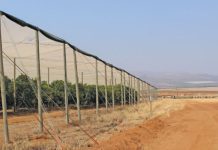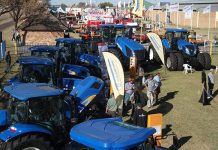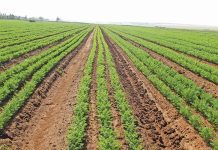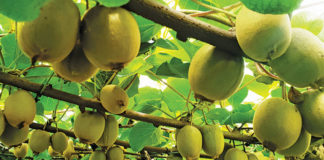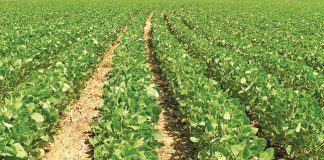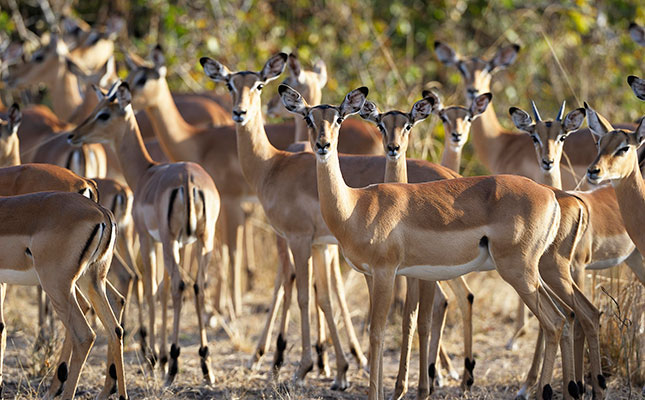
Photo: Getty Images
South Africa’s Meat Safety Act, No. 40 of 2000, provides regulations for the safe handling of meat between producer and consumer for conventionally produced red meat, and for poultry, ostrich, game, crocodile and rabbit.
According to Dr Tertius Bergh, an independent meat safety consultant, while these regulations are intended to guide a particular industry’s activities to stay within the law, they can be difficult to understand and implement, and as such can hinder business growth.
“For the 19 years since the introduction of the Meat Safety Act, and as a result of a lack of clarifying explanations from government, most of South Africa’s game industry has had to interpret the relevant regulations itself,” Bergh says.
“Unfortunately, what we’ve often seen on a large scale is poorly handled and poor-quality game meat coming out of the industry. This situation needs to be corrected urgently.”
Amendments needed to Meat Safety Act
Bergh believes that South Africa’s current Act needs to be rewritten to cater effectively for all animal types commonly consumed by people.
This will be a major task, however, as the revised Act has to be prescriptive without stifling the industries. He points out that South Africa has approximately 13 000 game farms that at some time or another will each harvest a portion of their game.
“South Africa is now in a situation where game farm numbers are not really growing, but their game populations are reaching and exceeding their carrying capacity. The excess game needs to be harvested and marketed formally and safely to consumers.”
The Act requires the meat value-chain to have government-certified abattoirs and food safety inspections. Even if there are no regulations to this effect, the Act must still be adhered to.
However, without regulations to clarify matters, many role players in South Africa’s game meat value-chain are confused about how to implement the Act’s requirements.
What Bergh finds particularly worrying, given this confusion and its potential to lead to food safety problems, is that the many zoonotic diseases historically found mainly in livestock are now increasingly common in game.
These diseases therefore pose a growing risk to human health via game meat that has not been inspected or has been poorly handled.
He points out that because game animals intended for human consumption are typically culled outdoors, in contrast to livestock in an abattoir, meat safety practices could be compromised.
These include interruptions in the killing-to-chilling process, bleeding of the game carcass being slower and not as effective as in an abattoir, and reduced shelf life. Rudimentary in-field slaughter processes could pose additional risk of contamination, especially in meat sourced from an animal hunted primarily for its horns or cape, and in other cases where the meat is of secondary importance.
Chemical residue
The residues of veterinary pharmaceuticals, a potential threat to human health, are another factor. Bergh says that, until now, these residues have been found to be “very low”.
However, the increase in intensively farmed and managed game could see an increase in the use of veterinary pharmaceuticals by game farmers.
“The lack of proper monitoring of pharmaceutical residue in game meat needs to be rectified urgently, especially if South Africa wants to be able to export larger volumes of game meat. And there is most definitely a big export market for our game meat, as it’s considered a healthy protein source,” Bergh says.
Ideally suited to marginal land
In addition to its attributes as a healthy source of animal protein if handled safely, game meat can be producted on marginal lands unsuitable for livestock or crop farming.
Moreover, the animals can include both grazers and browsers. This means that poorer lands can still be used to contribute to food security and job creation.
Game meat has a number of other advantages, Bergh points out. Due to its leanness, it is less prone to contamination by bacteria that may cause harm, such as food poisoning, to consumers.
Less water tends to be used during the slaughtering processes. And the the fact that culling is usually conducted during the colder winter months complements cold-chain procedures.
Need for training
A major disadvantage of current commercial game meat production and processing is that staff require specialised training to slaughter animals in the veld without compromising meat safety.
Commonly practised open-air slaughtering of game animals means that these staff often do not have the benefit of clearly defined ‘clean’ and ‘unclean’ areas, and therefore need to be able to allocate and differentiate these for themselves.
While it should be kept separate from the rest of the game carcass, the ‘dirty’ offal from a game animal should not be discarded. Instead, it should be handled and cleaned separately to the carcass as it is also a desirable protein source for many consumers.
“Another major disadvantage is that government personnel trained in game meat safety inspection are almost non-existent. This must be rectified so that South Africa’s game meat can meet export requirements,” says Bergh.
He points out that processes in place on game farms to minimise stress on the animals before they are culled will also improve the safety and quality of game meat. Game farmers already have the advantage of not having to transport live animals to the abattoir.
“Farmers who want to cull animals living in enclosures should avoid chasing the animals around inside the enclosure because this causes them stress,” he advises.
Game farms that wish to sell large volumes of meat commercially should ensure that each animal is shot either in the head or neck to ensure instant death.
The carcass must immediately be bled out properly at the scene. Vehicles for transporting game carcasses from the field to an on-farm processing facility should also be suitably equipped to allow for continued bleeding out during the drive.
Introducing the mobile game abattoir
Drawing on his experience of more than 30 years in the game meat industry, Bergh has designed a certified mobile game meat abattoir that deals effectively with most of the meat safety challenges faced by law-abiding game farms.
These mobile game abattoirs can be bought outright or hired. They can handle the entire killing-to-chilling process of each carcass while maintaining meat safety protocols, and a meat inspector can simultaneously examine each carcass processed.
He admits, however, that the mobile game abattoir has certain limitations.
“The personnel must be excellently trained for their work; the carcass throughput volumes may be limited; and on-farm roads have to be of suitable quality and width to allow the mobile abattoir to reach the work site,” he says.
Phone Dr Tertius Bergh on 082 902 8914, email him at [email protected]. Visit mobileabattoirs.co.za.
This article is based on a presentation given by Bergh at the Ruminant Veterinary Association’s congress held in uMhlanga, KwaZulu-Natal, in May.



